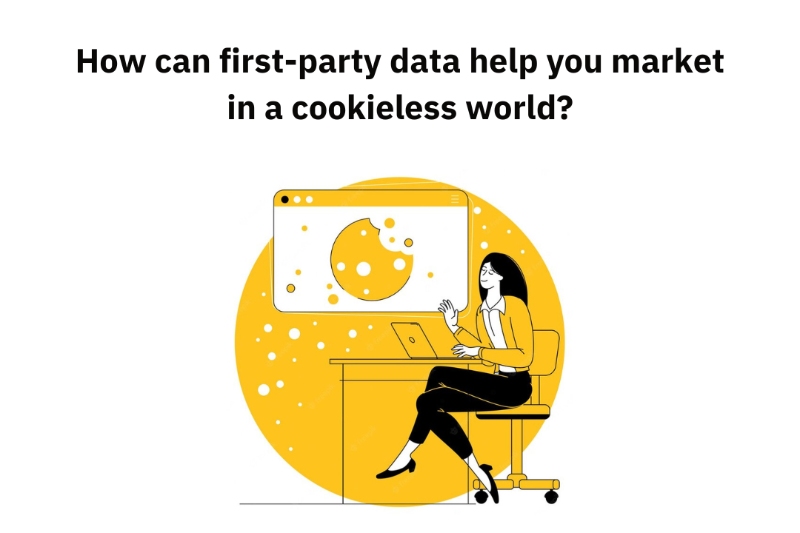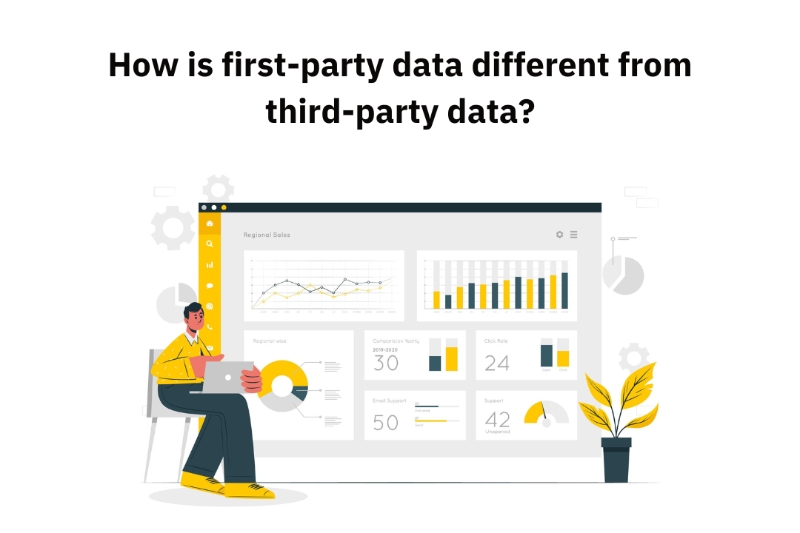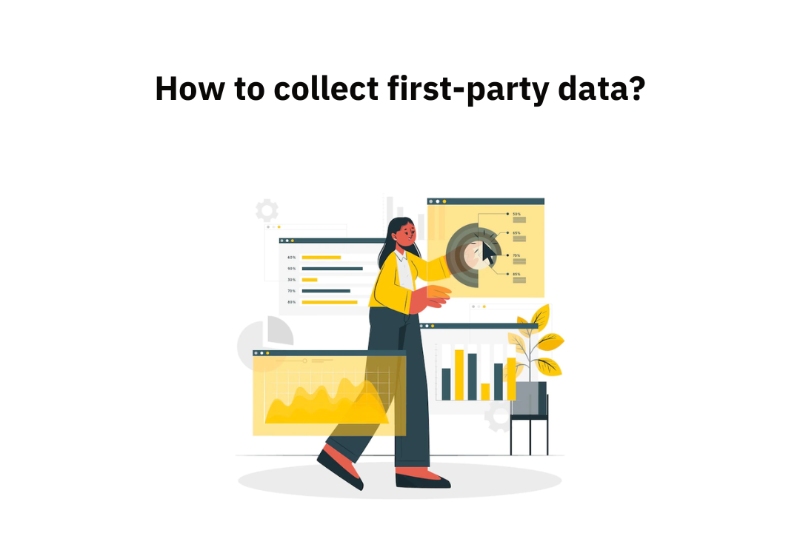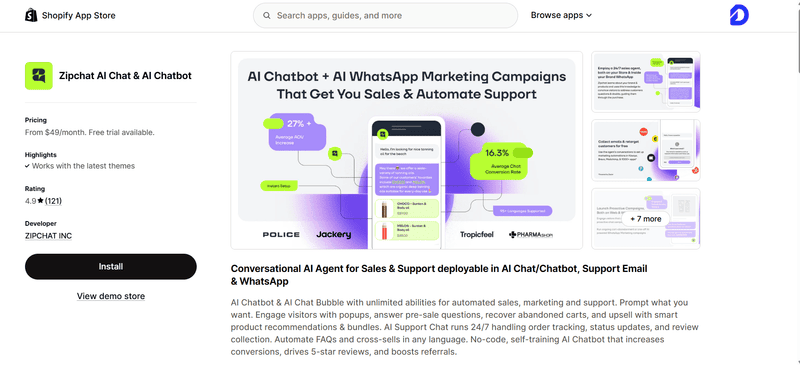
Contents
Why are third-party cookies dying?
Third-party cookies were once cool, with brands designing creative pop-ups that looked less like a choice and more like a compulsion to website visitors.
Although violating the personal privacy of end customers, third-party cookies did fuel the boom of highly targeted advertising in the last decade. But going into 2023 people can see through the clutter of how third-party cookies violate their privacy. A chain reaction started by some lawsuits against popular internet platforms has led to the ultimate demise of third-party cookies.
As third-party cookies disappear, ad data and third-party processing will decline in breadth, availability and quality.
And going into the future, as privacy laws get stricter third-party data which is the most used type of data now, will become impossible to access as all the third-party data comes from cookie tracking as -
- Google announced the stop of third-party cookies in Chrome by the end of 2024.
- Apple’s April 2021 iOS update 14.5, which featured a new consent protocol called App Tracking Transparency (ATT). ATT governs and constrains how apps and advertisers can use uniquely identifiable data like device ID to target, measure and optimize campaigns.
- According to the GDPR, any cookies that can be used to identify you are considered personal data and are thus subject to the GDPR’s regulatory requirements. This regulation, alongside California’s CCPA, is set to bring huge changes for marketers, who have relied on 3rd-party cookies for critical aspects of their job.
So how are leading brands adapting to the change?
Leading e-commerce brands are aware of the changes happening with second and third-party customer data and are aggressively shifting to using first-party data.
86%
of respondents from medium and large companies considered first-party data to be the most significant aspect of a business’ media strategy.
Source: Nielsen
How is first-party data different from third-party data?

First-party data is any data that a user provides directly to a brand. While third-party data is any non-first-party data that brands receive from external sources or websites. Third-party data includes things like Google Analytics and Facebook pixel, which are both used to gather information about users and their behaviour on the internet.
First-party data is often more valuable than third-party data because it's also more personally identifiable than third-party data and can be used for marketing purposes much more effectively than third-party data. First-party data allows you to target specific users with personalized campaigns that are tailored to their interests and needs, while third-party data can be used for demographic targeting, but it's less personal since it doesn't identify individual users by name or other identifying information such as email addresses or phone number.
How can you use first-party data to market effectively?

Help you build customer loyalty programs
First-party data helps brands better understand their customers’ needs by understanding what they buy, where they shop, how much they spend on each purchase, how loyal they are to particular brands, what promotions they respond best to (and which ones they don’t) etc.
Help you remarket effectively
With first-party data, you can tailor your marketing campaigns based on specific interests or purchase histories, making it easier to send relevant emails while spending less time on each message.
For example, if a customer has purchased a phone from your brand, you can then leverage data to sell them accessories that go along with the phone.
Predict future trends in consumer behaviour
The most obvious benefit of customer data is that it allows you to learn about your customers' habits and preferences.
This gives you insight into what motivates them to buy from you, which products they like and doesn't like when they're likely to visit your e-commerce website, what time of year they shop online, and whether they prefer buying in person or online... the list goes on!
Deliver a personalized experience
Using consumer data also helps brands improve their customer experience by offering personalized offers based on what's happening inside their accounts at any given time.
For example, if a customer's order is delayed, the brand can automatically send them a coupon code, so they don't have to wait around while it fills out their order in the back office.
How to collect first-party data?

Using Website Single-sign on
Signing in to the system with a username and password is one of the most common ways to access a system. In many cases, however, users will want to use more than one system to perform their daily activities, this is where Single Sign-on (SSO) comes into play.
You can use SSO for two main reasons:
- To save time by eliminating the need for multiple logins.
- To provide security by allowing only authorized users access to specific systems or applications.
Forms and surveys to collect first-party data
Surveys are a great way to collect first-party data because they allow you to ask your users questions that they're likely to answer honestly. They also make it easy for you to monitor the effectiveness of your campaigns over time.
Forms, on the other hand, are less effective than surveys because they don't provide a way for users to tell you what they think about your product or service.
Using Feedback to collect first-party data
To collect first-party data, start by looking at the reviews and feedback left by your clients. This can give you a good idea of their pain points, what they love about your service, and how you can improve.
This method can be used to collect information about your users, their behaviour, and what they like and dislike about your product or service.
Product registration to collect first-party data
Product and warranty registrations have quickly become the most efficient way of collecting first-party data, especially for consumer brands selling online.
Companies are moving away from using third-party data, and rightly so.
How does product registration work to get you first-party data?
Product registration software like Dyrect uses the product ownership experience to bring you the first-party data of your customers. Dyrect is a product registration software which works by having unique QR codes placed inside your product packaging.
Ready to get first-party data?
Leading e-commerce brands are using product registration software like Dyrect to collect first-party data and connect with all their customers.
Dyrect has enabled marketing teams of leading brands to access first-party data, with a data acquisition rate as high as 40%. Click here to know how Dyrect helps brands gather customer data. To know how Dyrect can help you collect first-party customer data, book a demo with our solution experts here.


